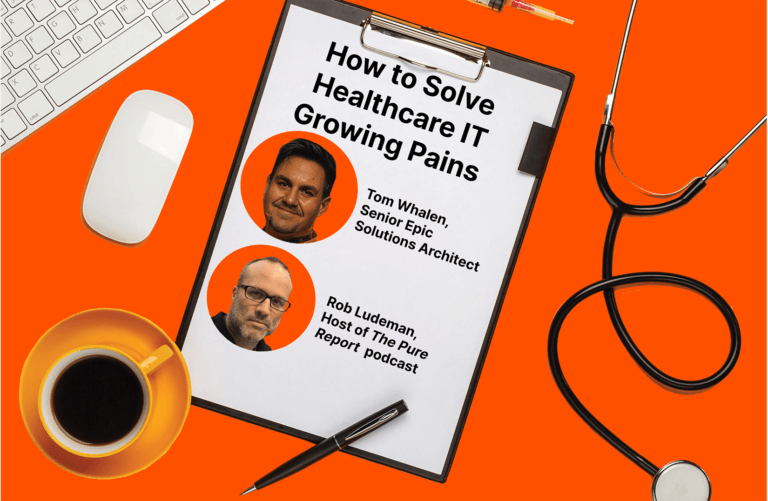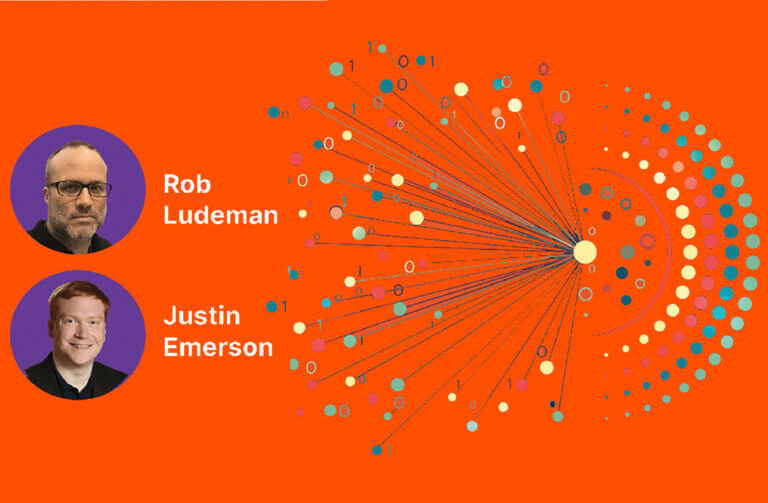Summary
Healthcare has undergone game-changing technological advancements that are helping to lower TCO and enable better patient care. Although healthcare institutions face challenges with data security, ransomware attacks, and cloud mobility, Pure Storage can help.
Few industries have evolved as rapidly as healthcare. If “data is the new oil” was the writing on the wall for IT-based growth opportunities back in 2010, then healthcare has been perhaps the most forward-looking vertical of them all.
As the Senior Solutions Architect for Epic, a leading EHR software vendor, seven-year Pure Storage veteran Tom “TDubs” Whalen has been at the frontlines of healthcare’s intersection with data storage.
“My pedigree’s always been healthcare’s always kind of been there for me and the doors opened in that direction and so I just kind of walked through them,” he said when we sat down for The Pure Report. “It wasn’t that I set out to do it but, looking back on it, I’m glad I did because it’s a very high-paced, dynamic genre to work, and for storage, it’s great because there’s always more clinical data to deal with.”
We chatted about the healthcare trends driving how data is stored and used to improve patient outcomes.
The Rapid Evolution of Healthcare Tech
Although the healthcare space has generally been characterized by limited risk-taking or perhaps being risk-averse, Tom, as an IT veteran, has had front-row seats to what is probably the most rapid technological change in healthcare history.
Cloud, SSDs, flash—they’re all game changers, Tom said, but it’s the way healthcare organizations are now using these technologies for foundational improvements—i.e., those that help lower cyber risk and TCO while maximizing the value of their data to improve patient care—that is really changing the game.
“I think the way customers embrace those technologies and figured how to use those creatively to help build out their infrastructure for a lot more value for the stuff they invest millions of dollars in every year—I think that is the thing that has changed the most.”
As an example, healthcare institutions like Pederzoli Hospital are leveraging Pure Storage to accelerate patient examination and diagnosis, allowing more patients to be seen each day. Using FlashArray™, the hospital not only improved performance but also added critical disaster recovery and security features to protect patient privacy and defend against the ever-increasing threat of cybercriminal activities.
Healthcare Complexities
There are many different types of healthcare companies dealing with many different types of issues, from regulatory compliance to IT infrastructure scalability to just knowing what they need at a data storage level.
“It’s a highly regulatory managed set of infrastructures for those IT spaces, but that’s why it makes it great for folks like myself,” Tom said. Having gained the background knowledge around these things gives Tom and his experienced healthcare team a certain advantage around dealing with the ins and outs of healthcare tech issues and having empathy for what healthcare organizations are going through. They don’t have only data volume, different data types, and velocity to worry about—they also have rapidly evolving regulations and extra-sensitive personal data to protect and retain.
Security as Top of Mind
Data security has become a crucial part of day-to-day operations in healthcare. One need look no further than recent news, which has featured a rash of cyberattacks against healthcare institutions, including a hack of payment processor Change Healthcare by Russian cybercriminals. “A lot of customers just don’t know how to operate in that space,” Tom said. “Customers just don’t know what questions to ask to understand how it’s going to affect them.”
Ransomware, for example, is an especially important and growing concern. “It doesn’t discriminate,” he said. “Security is probably the other most important topic right now in healthcare IT, as well as cloud.”
The Cloud Revolution
Healthtech has unquestionably embraced the cloud, but that doesn’t mean there aren’t issues. “The problem that I think a lot of IT shops are still faced with is how to get there, and how do I come back from it if I have to,” Tom said. “The ‘getting there’ has always been the easy part, the ‘coming back to where you were’ often is the most difficult thing to do and, unfortunately, probably the most expensive thing to do as well.”
Cloud has a place for clinical IT work but may not be appropriate for an “all-in” approach in healthcare, Tom said. Many healthcare institutions, for example, find themselves blindsided by fees when they start moving workloads and data to the cloud, and most healthcare organizations are still two or three years behind the adoption of cloud for certain healthcare use cases such as digital imaging.
The good news? Pure Storage is on it. “There are ways that we’ve been working at Pure to give customers a way of getting there without having to rethink or re-containerizing their entire infrastructure.” Pure Cloud Block Store™ makes it easy for customers to move products in and out of the cloud, giving them the flexibility to pick and choose which apps they want to run in the cloud.
“It’s finding the mix about what to keep on-prem and what to offer as off-prem or cloud; I think that’s still an evolving narrative,” Tom said.
![]()






